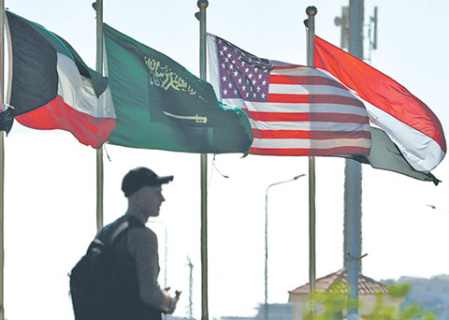
The eyes of the international community turn to Sharm el-Sheikh, Egypt, this October 13th, as a critical “peace summit” convenes with the ambitious goal of formalizing an agreement between Israel and the Hamas faction controlling the Gaza Strip. Spearheaded by the United States, the high-stakes gathering is set to host US President Donald Trump, whose visit will be preceded by a stop in Israel to address the Knesset and engage in pivotal discussions concerning the implementation of this prospective deal. Foremost among the contentious issues on the agenda is the crucial matter of Hamas’s demilitarization, a demand that has gained urgency following recent actions by the group indicating a clear intent to reassert military dominance within Gaza. These developments have fueled profound anxieties among Western nations, raising the specter of renewed hostilities should the delicate balance of the current ceasefire unravel.
Despite the official cessation of hostilities declared on October 10th, the pathway to a durable peace remains fraught with significant obstacles. President Trump’s itinerary includes meetings with families of Israeli hostages and a likely discussion with Prime Minister Benjamin Netanyahu regarding the complex situation in Gaza. American officials emphasize that a lasting resolution hinges on addressing the core security concerns of both parties effectively.
Israeli Defense Minister Israel Katz underscored the formidable challenge facing Israel post-hostage return, stating on October 12th that the destruction of Hamas’s extensive network of “terror tunnels” within Gaza would be paramount. This operation, he asserted, must proceed through an international mechanism established under US leadership and oversight. Katz explicitly defined the disarmament of Gaza as the fundamental cornerstone of any agreement between Israel and Palestinian militant groups, revealing that he has already directed the Israel Defense Forces (IDF) to commence preparations for dismantling the subterranean infrastructure painstakingly built by Hamas over years of political entrenchment.
However, Hamas has, in recent days, vigorously signaled its unwillingness to lay down arms. The radical group appears determined to reclaim its pre-war influence within the enclave, an authority significantly diminished by two years of conflict. In an official statement, Hamas issued an ultimatum to all other Palestinian militias operating in Gaza, demanding an immediate cessation of resistance activities within 48 hours. The group went further, vowing to prosecute paramilitary factions perceived to have collaborated with Israeli forces. Disturbingly, reports from Gaza cited instances of public executions attempted by Hamas members in certain areas.
Accounts from Gaza residents, corroborated by the Financial Times, illustrate Hamas’s swift operational response following the October 10th “calm.” The group reportedly initiated rapid redeployments across the Strip to re-establish military control in key strategic locations. These efforts were not without resistance; skirmishes between Hamas fighters and two Palestinian clans, allegedly receiving support and weaponry from the Israeli military, have been reported in the northern reaches of the territory.
A senior Israeli intelligence source confided to Al-Monitor that Jerusalem operates on the premise that Hamas will, in fact, not disarm willingly. Consequently, the establishment of a specialized peacekeeping contingent, operating under US patronage, is deemed essential to monitor the demilitarization process and other facets of the agreement. Washington anticipates that the bulk of these forces will be contributed by Arab and Muslim-majority nations, specifically naming Qatar, Egypt, Turkey, the United Arab Emirates, and Indonesia as potential participants.
Adding to the international effort, the United States is deploying a contingent of 200 military personnel to Israel. These American troops are tasked with coordinating the logistical and operational aspects of the proposed peacekeeping force but, critically, will not enter the Gaza Strip itself, according to US officials. Their role is strictly limited to support and coordination from outside the enclave.
Yet, the precise operational framework for these multinational peacekeeping forces remains shrouded in ambiguity. An unnamed Western diplomat, speaking to the Financial Times, voiced profound concerns about the potential for President Trump’s plan to falter dramatically. “There are many reasons why the Trump plan could go nowhere, because Hamas will obviously still be present in Gaza, and if we don’t make progress on stabilization forces and governance, there is a risk that this will all fall apart,” the diplomat cautioned. The lack of a clear consensus among key stakeholders – whether to pursue a full-fledged UN peacekeeping mission or a more limited engagement – further complicates the outlook.
Sources within the Western diplomatic corps, also speaking to the Financial Times, did not rule out the grim possibility of Gaza relapsing into a hot armed conflict. “It is entirely possible that during the implementation of the agreement we will see a scenario where Israel does not feel that Hamas is disarming, and will resume military strikes,” explained one diplomat. Conversely, “if Hamas does not feel that Israel is withdrawing, then Hamas will not disarm.” This highlights a dangerous cycle of mistrust that could easily derail any peace efforts.
On Friday, October 10th, the Israeli army completed its initial withdrawal from parts of the enclave to agreed-upon lines. While a significant number of Israeli troops reportedly exited the Gaza Strip over the weekend, as stated by the Israeli newspaper Haaretz, the IDF command remains acutely concerned. There are fears that Israeli units positioned along the new withdrawal lines could become vulnerable targets for various terrorist factions operating independently, including not only Hamas but also groups like Palestinian Islamic Jihad. Consequently, the exact deployment of IDF units within the coastal enclave will remain fluid, continually adapted to the evolving operational situation, according to military sources cited by Haaretz. This delicate dance of partial withdrawal amidst persistent threats underscores the profound challenges in transforming a fragile ceasefire into enduring peace.
